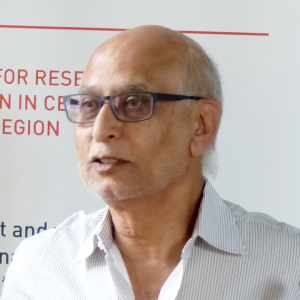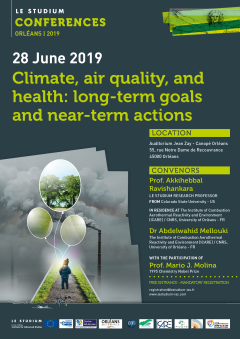Prof. Akkihebbal Ravishankara

From
Department of Chemistry and Department of Atmospheric Science - Colorado State University - US
In residence at
The Institute of Combustion Aerothermal Reactivity and Environment (ICARE) / CNRS - FR
Host scientist
Dr Abdelwahid Mellouki
PROJECT
Stratosphere: Impacts of Nitrous Oxide on earth system
Nitrous oxide is the third most important greenhouse gas and is now the most important emission of an ozone layer depleting gas. Its influence on climate and the ozone layer will become more important as other climate gases (primarily CO2 and CH4) and ozone-depleting gases are reduced in accordance with the climate treaties and the Montreal Protocol. Nitrous oxide has both natural and anthropogenic sources. The natural sources, assumed to be constant, have been in harmony with the earth system for millennia and are the ultimate targets of any policy actions. Anthropogenic N2O is mainly due to the food production and is an unintended byproduct of these activities.
One of the major needs in understanding the role of N2O, and in particular, any attempt to reduce emission from various sources is the quantification of the source strengths. Because N2O is long-lived (~120 years), has both natural and anthropogenic sources, and its sources are diffuse, it is difficult to quantify the strengths of sources of N2O. Yet, this is precisely what is needed to understand the role of N2O in climate and ozone layer depletion as well as to take any actions.
A program is proposed to make laboratory studies of N2O reactions, field measurements (at the surface, in the troposphere, and in the stratosphere), and sophisticated modeling studies to quantify nitrous oxide emissions.
Kinetic studies and surface emission will be measured at ICARE –CNRS Orleans, tropospheric abundances and vertical profiles will be derived from the balloon and aircraft measurement of LPC2E, and modeling studies using WACCM and, if necessary, WRF-Chem will be carried out in CPC2E and Colorado State University. Data on N2O abundances from clean surface sites, from NOAA and ALE-GAGE networks, will also be used.
The expected outcome if information on the atmospheric lifetime of N2O, total N2O emission as a function of time, and more accurate estimates of emissions from various anthropogenic sources of N2O.



